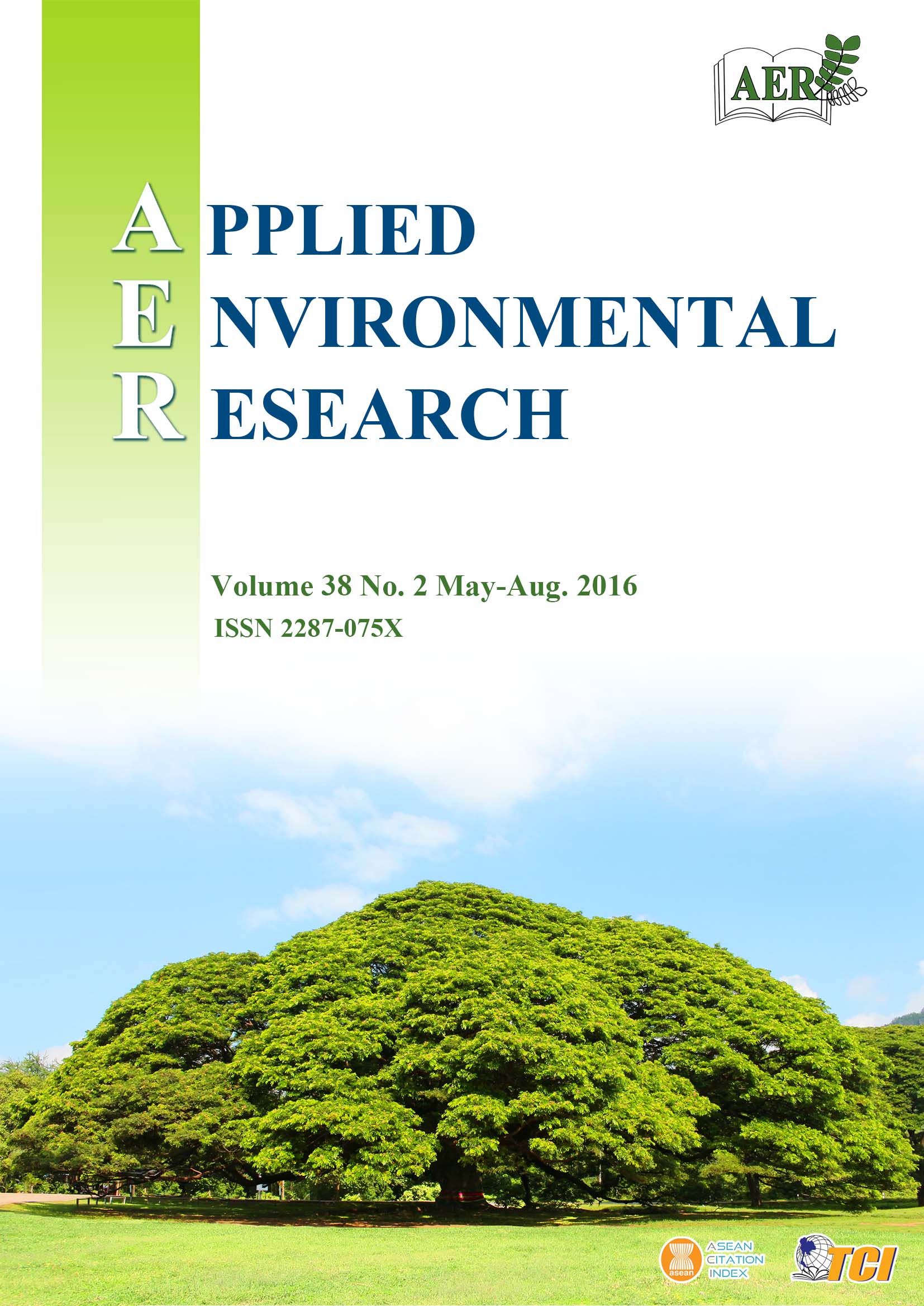Application of Rice Stubble Synthesized Zeolite for Greenhouse Gas Reduction
Main Article Content
Abstract
This investigation aims to study the value of synthesized zeolite in reducing greenhouse gasses (GHGs) emitted by rice stubble. The experiment was divided into 2 parts. Part I comprised a study of the efficiency of GHGs reduction by synthesized zeolite and part II involved application of synthesized zeolite to reduce the cumulative GHGs emissions over 110 days from paddy rice cultivation in Khlong 4, Pathum Thani Province. The experiments comprised 2 treatments: untreated control (I), and rice stubble with addition of synthesized zeolite (II). The study measured changes in the emissions of CH4 and CO2, conducted 3 d per week for 1.30 h during the cultivation period.
The results showed that rice stubble synthesized zeolite could reduce GHGs CH4 and CO2 under irrigated conditions. In the experiment, synthesized zeolite had an efficiency of 8.91% and 24.5% in reducing CH4 and CO2, respectively. Footprint analysis showed that both gases were continuously emitted throughout cultivation. In Cumulative emissions from the control treatment were 42.57 g CH4 m-2 crop and 86.40 g CO2 m-2 crop. Zeolite addition reduced emission levels to 30.71 g CH4 m-2 crop and 57.77 g CO2 m-2 crop. The reduction efficiencies CH4 and CO2 were 27.87% and 33.14%, respectively. It can be concluded that the rice stubble synthesized zeolite was capable of reducing GHGs significantly and that the efficiency was rate-dependent. It was clear that the GHGs emission reduction rate of synthesized zeolite was 0.148 g CH4 m-2 g zeolite and 0.358 g CO2 m-2 g zeolite.
Article Details

This work is licensed under a Creative Commons Attribution-NonCommercial 4.0 International License.
Published articles are under the copyright of the Applied Environmental Research effective when the article is accepted for publication thus granting Applied Environmental Research all rights for the work so that both parties may be protected from the consequences of unauthorized use. Partially or totally publication of an article elsewhere is possible only after the consent from the editors.

